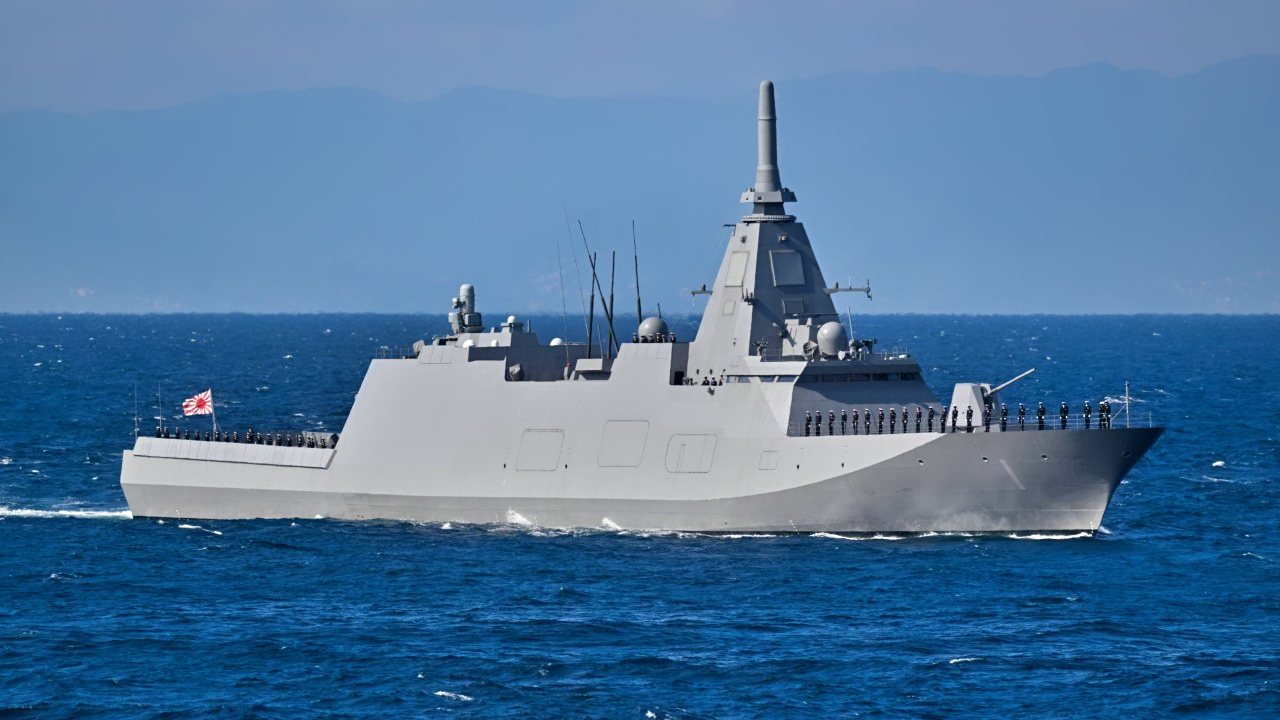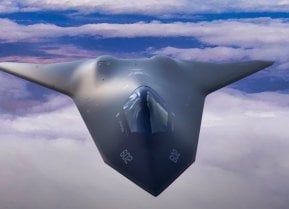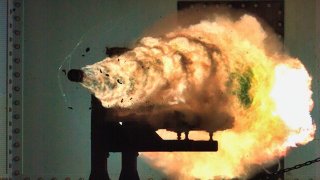Japan to Build New Destroyers Armed With Railguns and Lasers
Japan is progressing towards equipping its future 13DDX destroyers with advanced electromagnetic (EM) railguns and high-powered lasers.
Summary and Key Points: Japan is progressing towards equipping its future 13DDX destroyers with advanced electromagnetic (EM) railguns and high-powered lasers.

-Developed by Japan’s Ministry of Defense's Acquisition, Technology & Logistics Agency (ATLA), these destroyers aim to counter high-speed threats, including hypersonic missiles.
-Japan has been developing railgun technology since 2015, achieving a projectile speed of 4,470 mph in a 2016 demonstration.
-Collaborating with French and German authorities and seeking insights from the U.S. Navy, Tokyo aims to overcome the energy challenges associated with railguns, potentially succeeding where other nations have faltered.
Japan's 13DDX Destroyers: Pioneering Railgun Technology for Future Warfare
It is no secret that Japan produces gizmos and gadgets on a scale not seen in the West. While its consumer products, from robot dogs to micro washing machines, may stand out to those who visit the Asian nation, military analysts are now watching another technology that Tokyo has gone all in on—namely, railguns, which could be employed on the Japan Maritime Self-Defense Force's (JMSDF) new class of destroyers.
International military analyst firm Janes reported that the JMSDF has begun to determine if it could acquire a new class of warships—the 13DDX future destroyer—that would be equipped with "electromagnetic (EM) railguns and high-powered lasers."
The 13DDX was reportedly developed by Japan's Ministry of Defense's (MoD) Acquisition, Technology & Logistics Agency (ATLA), and in addition to being armed with railguns and lasers, the future destroyers could be further equipped with other types of directed energy weapons (DEW) systems, which could be coupled with a multifunction radar platform. The system could be optimized to counter high-speed targets—and while not explicitly stated that could likely include hypersonic weapons.
Railguns: Big in Japan
As previously reported, Tokyo has been engaged in developing a railgun since 2015, with the aim of being able to stop incoming missiles—including the aforementioned hypersonic missiles—that could be fired at the island nation. The goal of the program has been to mount such a weapon on a warship to add greater flexibility to the system, and a 2016 demonstration of a railgun had a projectile reach a speed of approximately 4,470 mph, or 5.8 times the speed of sound.
On paper, the system offers great promise, but railguns have numerous hurdles to clear, particularly the energy required for the weapon to operate as advertised. The basic technology already exists, which includes a very large power source, a pair of parallel rails, and a moving armature. The concept itself is rather simple, but the basic problem has been one of obtaining enough power to actually launch a projectile in a controlled and reliable manner.
A railgun could require millions of amps to create a magnetic field required to launch the projectile.
Tokyo has already realized it probably can't go it alone, and in May, the ATLA announced it had struck an agreement with French and German authorities to co-develop the technology that could lead to the successful employment of the platform. The French Ministry of Armed Forces, the German Ministry of Defense, and the French-German Research Institute of Saint-Louis (ISL) are among the entities that could work with ATLA on the future development of railguns.
Tokyo Looking to Washington
It was also in May that ATLA announced it had sent officials to Washington to glean additional insight from the United States Navy, which has also worked toward the development of a railgun.
The U.S. Navy invested upward of $500 million into its electromagnetic railgun (EMRG) program, which had a goal to develop a weapon that was capable of firing projectiles at hypersonic speeds of 4,500mph or more. Because of the high speed, mass, and kinetic energy, the projectile wouldn't even need to contain explosives to inflict damage. However, after hundreds of millions of dollars were invested over a decade, the sea service effectively scuttled its efforts to develop the technology in 2021.

Perhaps the JMSDF will succeed where the U.S. Navy has failed.
Author Experience and Expertise: Peter Suciu
Peter Suciu is a Michigan-based writer. He has contributed to more than four dozen magazines, newspapers, and websites with over 3,200 published pieces over a twenty-year career in journalism. He regularly writes about military hardware, firearms history, cybersecurity, politics, and international affairs. Peter is also a Contributing Writer for Forbes and Clearance Jobs. You can follow him on Twitter: @PeterSuciu. You can email the author: mailto:[email protected].
Image Credit: Creative Commons.


